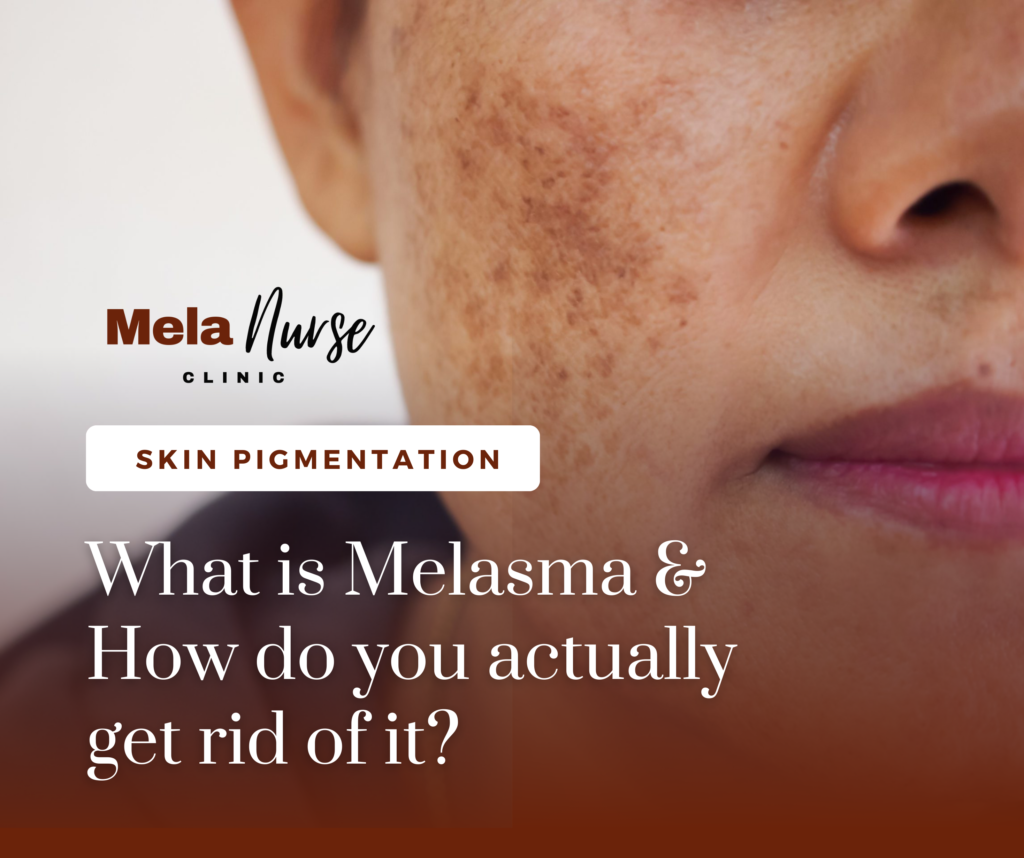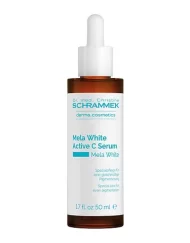What is Melasma & How do you get rid of it?

Understanding Melasma: Causes, Symptoms, and Treatment Options
Melasma is a common skin condition that affects many people but in particular, women and is a type of skin hyperpigmentation. Despite being a harmless condition, melasma can have a significant impact on a person’s self-esteem and self confidence and can be one of the hardest types of hyperpigmentation to treat. So what how exactly does it develop and what can we do to get rid of it?
Diagnosis
Melasma is considered a type of hyperpigmentation where the skin develops dark, discoloured patches on the face. These patches are usually brown or grey-ish in colour and typically appear on the forehead, cheeks, nose, upper lip, or chin in a sort of butterfly-like pattern in many people. While melasma doesn’t actually cause any physical harm or side effects, the visual implications can be upsetting and life-changing for those people that develop it.
So What Actually Causes it?
The exact cause of melasma is not fully understood, but several factors contribute to its development. The primary triggers include:
Hormonal Changes: Hormonal fluctuations, particularly during pregnancy, can stimulate the overproduction of melanin (the pigment responsible for skin colour). This is why melasma is often referred to as the “mask of pregnancy” (also known as chloasma)
Sun Exposure: Exposure to ultraviolet (UV) rays is a significant factor in melasma development. Sunlight triggers the production of melanin, leading to the darkening of existing patches and the formation of new ones.
Genetic Predisposition: Some individuals may be genetically predisposed to melasma, meaning that if it runs in their family, they are more likely to develop the condition. It is also more common for people with darker skin (and thus more active melanin) to develop this condition.
Hormone-Based Medications: Certain medications, such as contraceptive pills or hormone replacement therapy, can contribute to the onset of melasma.
Symptoms of Melasma
The primary symptom of melasma is the presence of dark, irregular patches on the face. These patches often have a well-defined border and can vary in size and shape. Melasma is typically classified into three types based on its distribution:
- Epidermal Melasma: Characterised by brown patches on the surface of the skin.
- Dermal Melasma: Involves greyish-blue patches that extend deeper into the dermal layer.
- Mixed Melasma: A combination of both epidermal and dermal involvement
Treatment Options
While melasma is a chronic condition, various treatment options are available to manage and improve its appearance. It’s important to note that results can vary from person to person, and patience is key. A multi-modal approach to treatment is necessary and these commonly include:
Pigment Suppressors (Tyrosinase Inhibitors): Topical Creams & Serums as well as prescription products (e.g. hydroquinone & tretinoin) can help to aid lighten melasma due to key ingredients that are able to inhibit melanin formation such as: Arbutin, Kojic Acid & Azelaic Acid.
Chemical Peels: Chemical peels work by removing the outermost layer of skin, promoting the growth of new, evenly pigmented skin and infusing key acids and peeling ingredients in the skin to lighten existing pigmentation.
Microneedling: Skin needling promotes the growth of new healthy and stabilised skin cells whilst being able to regulate over-active melanocyte activity leading to fewer dark marks and visible brown patches.
Anti-oxidants: Like Pigment Suppressors (Tyrosinase Inhibitors) antioxidants like Glutathione & Vitamin C can can help to aid lighten melasma due to their melanin inhibiting powers.
Laser Therapy: Certain laser treatments target melanin to reduce pigmentation. Multiple sessions may be required for optimal results.
Sun / UV Protection: The most crucial aspect of melasma management is sun protection. Wearing broad-spectrum sunscreen with a high SPF such as SPF 50, along with protective clothing (hats, sunglasses etc.) and accessories, helps prevent further darkening of the skin and melasma getting worse or re-activated after successful treatment.
There are quite a few options these days to treat melasma and although it is often a difficult condition to treat it can be done! The most import element to gain a successful result is a very comprehensive consultation and treatment plan from a practitioner who knows their stuff and is experienced in treating melasma in all skin types from very fair to very dark, like we are at Mela Nurse Clinic.
If you make sure you stick to the treatment programme given to you, do maintenance treatments, and stay away from triggers – you can most definitely enjoy clear and glowing skin and be melasma free.





